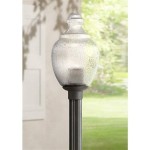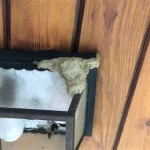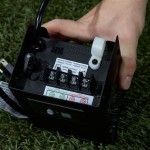What Are Most Outdoor Cushions Made Of?
Outdoor cushions play a crucial role in enhancing the comfort and aesthetics of any outdoor space. Whether it's a patio, balcony, or garden, these cushions invite relaxation and create a welcoming ambiance. The durability and longevity of outdoor cushions depend heavily on the materials used in their construction. This article delves into the common materials used for outdoor cushions, highlighting their properties and suitability for different applications.
1. Fabrics
The fabric used in outdoor cushions is the first line of defense against the elements. It must be resilient, fade-resistant, and easy to maintain to withstand the sun, rain, and wear and tear. Here's a breakdown of commonly used outdoor cushion fabrics:
- Acrylic: Acrylic fabrics are known for their versatility and durability. They are water-resistant, fade-resistant, and offer a soft hand feel. Acrylic fibers resist mildew and are easy to clean, making them suitable for both indoor and outdoor use.
- Polyester: Polyester is another common fabric used for outdoor cushions. It is highly water-resistant, stain-resistant, and fade-resistant. Polyester fabric is also known for its strength and durability, making it suitable for heavy-duty use.
- Olefin: Olefin fabric, also known as polypropylene, is often used for outdoor furniture due to its exceptional durability and resistance to UV rays, water, and stains. It is a popular choice for cushions that will be exposed to harsh weather conditions.
- Sunbrella: Sunbrella is a premium brand of acrylic fabric specifically designed for outdoor use. Known for its vibrant colors, excellent fade resistance, and easy maintenance, Sunbrella is a top choice for high-end outdoor furniture.
- Solution-Dyed Acrylic: As the name suggests, solution-dyed acrylic is a type of acrylic fabric that is dyed during the manufacturing process, resulting in superior color fastness and fade resistance compared to traditional acrylic fabrics.
2. Fillings
The filling of an outdoor cushion provides comfort and support. The type of filling used significantly affects the overall feel and longevity of the cushion. Here are some of the most prevalent cushion fillings:
- Polyurethane Foam: Polyurethane foam is a popular choice for outdoor cushions due to its affordability, comfort, and durability. It offers good support and resilience, but it can be prone to sagging over time, especially in areas that experience heavy use.
- Polyester Fiberfill: Polyester fiberfill is a lightweight and breathable filling material that provides a soft and comfortable feel. It is commonly used for cushions that require a more relaxed or supportive feel. However, it tends to compress more easily than other materials, leading to a loss of loft over time.
- Down and Feather: While down and feather fillings are traditionally associated with indoor cushions, some outdoor cushions also use these materials. They provide exceptional comfort and breathability but are more susceptible to moisture and mildew. They typically come with a protective outer shell to prevent moisture penetration.
- High-Density Foam: High-density foam offers superior durability and support compared to traditional polyurethane foam. It is less prone to sagging and retains its shape better over time. However, it can be more expensive and less comfortable than other fillings.
- Recycled Fillings: In recent years, there has been an increase in the use of recycled materials for cushion fillings, such as recycled plastic bottles or fibers. These sustainable options offer similar comfort and performance to conventional fillings while promoting environmental responsibility.
3. Construction
The construction of an outdoor cushion plays a vital role in its durability and overall quality. The way the fabric is attached to the filling and the reinforcement used significantly affect the longevity of the cushion. Consider the following aspects of cushion construction:
- Sewn Seams: Most outdoor cushions have sewn seams that hold the fabric and filling together. The quality of stitching and the type of thread used influence the strength and durability of the seams.
- Zippers: Many outdoor cushions have zippers that allow for easy removal of cushion covers for cleaning or replacement. The quality and durability of the zipper are essential for the long life of the cushion.
- Reinforcements: Some cushions incorporate additional reinforcements, such as webbing or straps, to provide extra support and prevent sagging. These reinforcements enhance the overall durability of the cushion, especially for those used in high-traffic areas.
By understanding the different materials used in outdoor cushions, you can make informed decisions when purchasing new cushions or replacing old ones. Choosing cushions that utilize high-quality fabrics, durable fillings, and robust construction will ensure that your outdoor space remains comfortable and stylish for years to come.

Diy Outdoor Cushions A Erfly House

Diy Outdoor Cushions A Erfly House

Sew Easy Outdoor Cushion Covers Confessions Of A Serial Do It Yourselfer

Diy Outdoor Cushions A Erfly House

Sew Easy Outdoor Cushion Covers Confessions Of A Serial Do It Yourselfer

Diy Outdoor Cushions A Erfly House

Dyed Outdoor Cushions Rit Dye

Outdoor Cushions 101 Everything You Need To Know Home Style

Fabric For Outdoor Cushions Sunbrella

Sew Easy Outdoor Cushion Covers Confessions Of A Serial Do It Yourselfer
Related Posts







